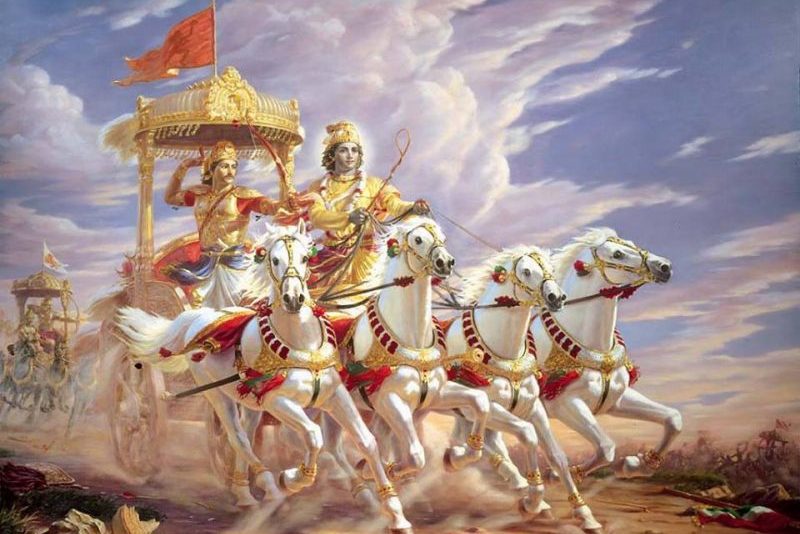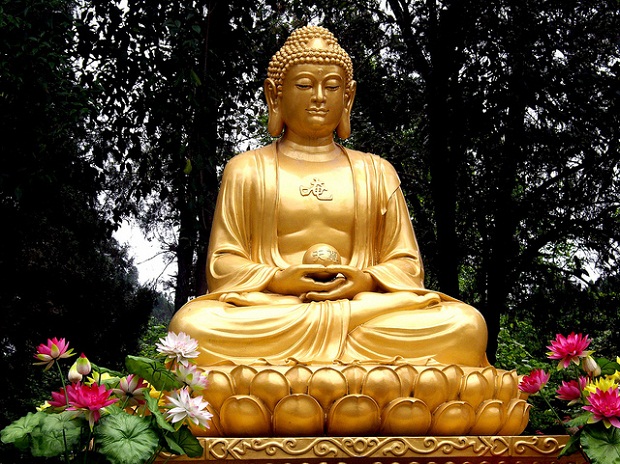- Home
- History of India
History of India
Updated on 10-03-2024
History of India
History of India:
India is a land of rich culture and History. India is located in Asian continent and is the home for one of the oldest and most influential civilisations which is known as Indus Valley Civilisation. The Indus Valley civilization flourished in western part of South Asia what is now in Pakistan and western India. History refers to past discoveries, dynasties, civilisations which helped any country for the development in all fields.
To learn and know more about Indian history, the period can be divided into three groups namely ancient or the prehistoric era, medieval period and India’s struggle for independence.
Indian history dates back to one of the oldest civilisations in the world. The history of India includes from Indus valley civilisations to the rise of various religions like Hinduism, Buddhism, Jainism. India was ruled by many important dynasties before and after Christ.
The different culture, religion which these rulers left has a major impact even today on the lives of Indian people. The first major civilisation that occurred in south Asia is the Indus Valley Civilisation. Thus it can be said that the Indian history began with the birth of Indus valley civilization which is evident in the places like Mohenjo Daro, Lothal and Harappa and the coming of Aryans. These two phases are usually called the Pre vedic and Vedic age.
The Vedic period marks the collection of beautiful hymns that were some composed by the Aryans which also led to the birth of Hinduism. This period also witnessed the division in the society based on the caste like Brahmins (priests), Kshatriyas (warriors), Vaishyas ( merchants) and Shudras (labourers). Later during the fifth and sixth century Gautama Buddha and Mahavira preached their philosophies which ultimately led to the birth of Buddhism and Jainism.
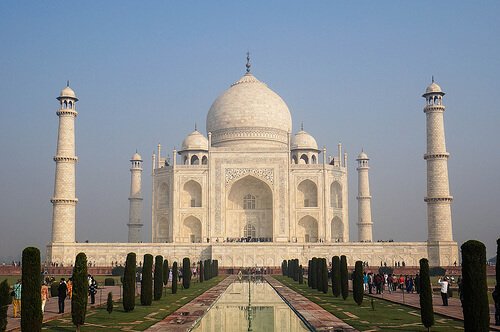
Indian literature like Parkrit and pali also started to flourish during the 3rd and 4th century and also during the same period Mauryan empire started to rule India. Later on Gupta dynasty started to rule during 3rd century which period is known as the ‘Golden Age of India’. Slowly different dynasties started to rule and take complete control on India.
The best part during this period is the marvellous architecture in which some of the temples or monuments are world famous even to this date. Some of the important dynasties that ruled India from 5th to 11th century are Rashtrakutas, Gurjara Prathihara Chalukya, Cholas, Pallavas, Hoysala’ s, Vardhan Dynasty, Vijayanagara empire and many more.
By eighth century Islam came to India and by 11th century they firmly settled in India. Some of the major dynasties that ruled and ruined India are the Slave dynasty, Delhi Sultanate, Mughal Empire and towards the south was the Tipu sultan. Shah Jahan of Mughal dynasty commissioned the world famous mausoleum Taj Mahal which was built in the memory of his beautiful wife Mumtaz Mahal.
Here is the timeline of the History of India
India before Christ/ Prehistoric Period/Stone age
The history of India began when human beings first appeared on the globe. The history can be broadly divided into stone age, bronze age and Chalcolithic age. It was started almost 7000 years back but no proper records are available; however some of archaeological evidence like the artefacts, pottery, stone tools and many more are found at different places. It can be said that stone age did exist along the river Narmada. The stone age is divided into paleolithic age, Mesolithic age and Neolithic age. For detail view on all the ages please click the link
Paleolitic age is a prehistoric period of human history who used stones as weapons and tools. Paleo means old and litic means stone. They were hunter gatherers. This age is also known as the old stone age period.
This age corresponds between Paleolithic and Neolithic age. With the improvement in climatic conditions human inhibition also increased. This period also refers to the middle stone age.
Neolithic period also known as new stone age period. This age lasted approximately from 8000BC-3000BC. New occupation started to develop. It is the final division of the stone age period and is also known as the new stone age period.
Bronze age/Ancient Indian history
One of the oldest civilisations that occurred around 2500-1500 BC is Indus Valley Civilisation. The Indus Valley Civilisation is named after the river Indus. This civilisation flourished along the banks of river Indus and its tributaries which include present day Pakistan and Afghanistan. Indus Valley Civilisation is also known as Harappan civilisation. Harappa is the first site to be excavated in the early 20th century. The site is now Pakistan. It is really interesting to read about this one of the oldest civilisations. Keep reading here.
Chalcolithic age can be considered as a transition period from neolithic age and bronze age. This is the period when stone tools were losing identity and copper vessels were gaining importance. People started to use tools made up of metals like copper and its alloy bronze. The economy was largely based on subsistence agriculture, stock raising, hunting and fishing. The presence of painted pottery is one of the most distinguishing features of chalcolithic age.
Iron age/Vedic Period
Vedic Period
It is the period between late bronze age and early Iron age in the history of India. Vedas were composed and orally transmitted from one generation to another generation. Vedic period is the period where the Vedas were composed. The Vedic civilization flourished between 1500 BC to 500 BC on the Indo Gangetic plains of Indian subcontinent. After the fall of Indus Valley Civilization most of the Indo Aryans moved to north western India and started to make their living along the Indus Valley. Read more about the Vedic Period here.
Janapadas:
Janpadas were the small kingdoms during the vedic period. According to the literary sources the janapadas flourished between 1500 BCE to 500 BCE. According to samhitas jana denotes a tribe and were headed by a king. During this period Janapadas were the highest political unit in North India. The succession was mostly hereditary and the head of the kingdom was called as the rajan. The king was assisted by sabha and samiti along with a priest and a commander in chief. With the development of Iron in parts of Uttar Pradesh and Bihar, the Janpadas were turned into Mahajanpadas who became more powerful and big. SOme of the notable kingdoms include Kuru, Panchala,Kosala and Videha.
Mahajanapadas:
They were the set of sixteen kingdoms that existed in the northern part of ancient India from sixth to fourth century BCE. During the late vedic period when the Janapadas started making permanent settlements it finally gave rise to Mahajanpadas. Out of the sixteen two were ganatantras and the remaining fourteen were monarchy. The sixteen kingdoms were Anga, Ashaka, Avanti, Chedi, Gandhara, Kashi, kamboja, Kosala, Kuru, Magadha, Malla, Matsya, Panchala, Surasena, Viji and Vatsa. After Indus Valley Civilization this period saw the second Urbanisation in India.
Hinduism: One of the oldest religions in the world is Hinduism. It is the third largest religion followed by people worldwide. Hinduism is widely practised in India and in some other Asian countries. The word Hindu is derived from the Sanskrit word Sindhu (which is the name of the river).
Philosophy is an integral part of any religion in India. Philosophers are great thinkers and very good advisers. It is a strong belief of any philosophers that any problem can be solved with the help of philosophy. Every human being has an urge to know who created the earth, nature, death and birth.
Buddhism started around the 6th century BC when Hinduism was taking strong roots in Indian culture during Vedic period. Buddhism was started by Gautama . This is one of the oldest religions which is practised till date. For further understanding
Another important religion that cropped during Buddhism period is Jainism. Jains trace their history through24 thirtankars. For further information.
Mauryan Empire- History of India
Mauryan empire: The Mauryan Empire was founded by Chandragupta Maurya between 322BCE to 187 BCE. The capital was Pataliputra and the empire spread across Magadha in the India Gangetic plain. The two great rulers Chandragupta Maurya embraced Jainism and Ashoka embraced Buddhism. All the economic activities and the administration of the empire were very good and disciplined during Chandragupta period. Ashok rule was different to that of Chandragupta Maurya. Ashoka embraced peace after the Kalinga war. To learn more on Mauryan empire click here.
Classical Period-- Gupta Empire
Gupta dynasty: The Golden age of India was the period of Gupta empire. One of the ancient and wonderful empire that ruled from 319 to 543 CE. Sri gupta founded Gupta dynasty and made Pataliputra as capital. Some of the great rulers of this dynasty are Chandragupta 1, Samudragupta, Chandragupta2 and great scholars include Kalidasa, Aryabhata, Varahamihira and Vatsyayana. The period became an important cultural and learning centre during gupta period. Learn more of this wonderful empire by clicking the link here and do share your thoughts.
Important Dynasties
Harshavardhan Dynasty: Harshavardhan also known as Harsha started the Vardhan Dynasty in India and ruled from 606 to 647 A.D. He ruled for 41 years. He was born on 590 A.D. His son was Prabhakara Vardhana. Harshavardhan was defeated by Pulakeshi2 of Chalukya Dynasty. This resulted in truce accepting river Narmada as the Southern boundary for his Kingdom. Hieuen Tsang’s mentions that in spite of many victories Harsha was not able to win against Pulakeshi 2. He calls Harshavardhan as Lord of Northern India. Law and order in ruled parts of India was good during his period. The offenders were strictly punished. Check out for more details on the vardhan dynasty here.
Medieval Period in History of India
Medieval Period: This is a very important phase in India. It is between ancient and modern periods. This period went on for almost three centuries. The beginning of the early medieval period can be typically taken as after the collapse of the Gupta Dynasty. It is from 480 AD to 550 AD. Some of the important rulers who ruled during this period are
Prathihara dynasty: Gurjara Prathihara or just Prathihara dynasty ruled most part of North India from middle of 8th century to 11th century. The dynasty is known for beautiful sculpture and architecture. One such temple building is Khajuraho which is a UNESCO world heritage site. Nagabhata I and Nagabhata II were great rulers of this dynasty. Let us learn more about this wonderful dynasty here.
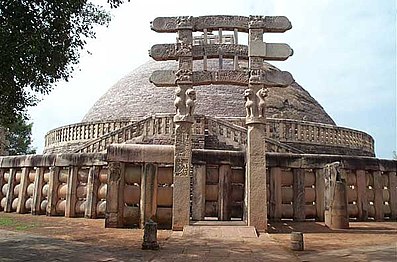
Chalukyas: Chalukya dynasty ruled most part of southern and central India between 6th and 12th century. The Chalukya's architecture can be seen in Badami, Pattadakal, Aihole and Mahakuta. The Western Chalukya’s ruled from Basavakalyana till the end of 12th century. learn more about chalukyas by clicking here.
Cholas: The Chola dynasty was the longest ruling dynasty in India. The ruled most parts of southern India. The founder of Chola Empire was Vijayalaya. Some of the important rulers of Chola dynasty include Rajaraja Chola I, Rajendra Chola I, Rajadhiraja Chola, Virarajendra Chola under whom the empire became cultural, military and economic power of the whole of South Asia. Under the Chola dynasty the South India reached its peak in art, architecture, religion and culture. Some of the temples built during this period are Brihadeshwarar temple, Airavatheshwara temple and many more. Literature also flourished during this period.
Hoysala dynasty: Basically Kannada dominated rulers Hoysala dynasty ruled most part of Karnataka from 10th to 14th century. Initially the capital city was made as Belur but later it was moved to Halebidu.
Late Medieval Period/Early Modern Period
The late medieval and early modern era period saw many wars and division among Hindu Muslim religions. Many Muslims rulers destroyed the temples built during the chola, Chalukya period. It is a period of growth of Islam rulers. Some of the important Muslim dynasties include
Delhi sultanate: Delhi Sultanate which was a Muslim sultanate that ruled from Delhi for nearly 320 years. It ruled most parts of India from 13th to 16th century. five dynasties ruled over Delhi sultanate that are Mamulk dynasty ( 1206-90), the Khalji dynasty(1290-1320), the Tughlaq Dynasty (1320-1414), the Sayyid dynasty ( 1414-51) and the Lodi dynasty (1451-1526). During this period architecture was at its peak.
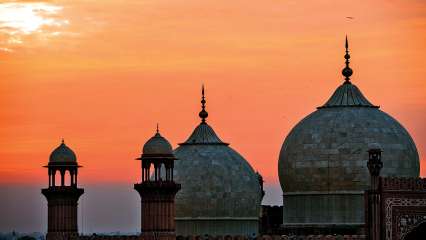
The world famous Qutub Minar was built by Qutub ud din Aibak of Slave dynasty. The Delhi Sultanate had a very strong army and hence they successfully rebelled the Mongol invasion of India. The rulers of Delhi sultanate also sacked and ransacked many Hindu temples one such temple is the Hoysaleshwara temple in Halebidu. Delhi sultanate left on a long-lasting impression on India.
Read more on other Indian Dynasties here
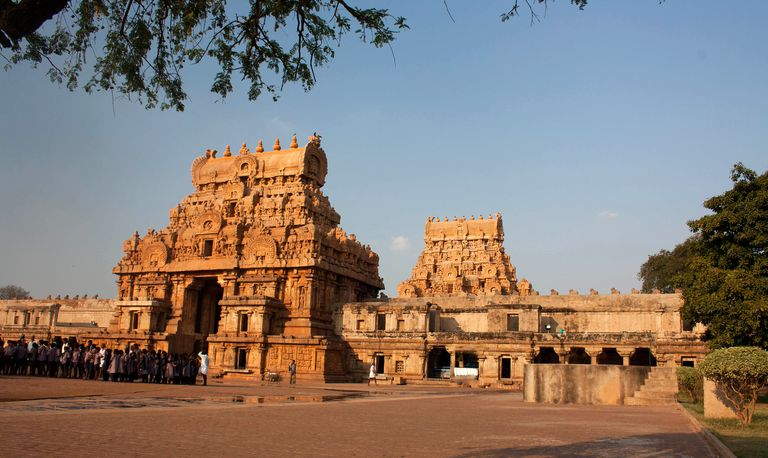
Vijayanagara Empire: Vijayanagara Empire was established in the year 1336 AD by Harihara I and Bukha Raya I of Sangama dynasty. They ruled most parts of Southern India. The Vijayanagara Empire could not survive the attack of combined armies of Deccan Sultanates in the year 1565. After the battle at Talikota in 1565 the Vijayanagara started to decline. In the battle Alia Rama Raya was Killed his brother started the Aravidu dynasty and made Penukonda as the new capital instead of Hampi. Finally, the empire came to an end in the year 1646.
Mughals: Mughal Empire is a vast empire that was founded by the Timurid dynasty in the year 1526. Babur was the first ruler and founder of Mughal dynasty in India. Babur's son was Humayun who was defeated by Sher Shah Suri in the year 1540 and was forced to move to Kabul. The Mughal dynasty which was a huge dynasty has some great leaders like Akbar, Humayun, Aurangzeb, Shahjahan and Jahangir.
The reign of Shahjahan can be termed as the golden age of Mughal architecture. He built many monuments, some of them are the world famous Taj Mahal, Red Fort, Jama Masjid, Delhi and Lahore Fort. Akbar who was the grandson of Babur was in favour with Hindus. He married a Rajput queen and they together had a son by name Jahangir.
During Akbar’s rule he rolled back jizya rule for non-Muslims and also declared Amari which means not killing animals during the holy days of Jainism. He did many developmental works and conquered large parts of India during his reign. There were many wars during Mughal period. Finally the Mughal dynasty came to an end during Indian Rebellion of 1857 and later formally taken over by the British.
Maratha Empire: This Empire was founded by Chatrapati Shivaji and was ruled during 17th and 18th century. The empire expanded from Tamil Nadu in the south to Peshawar in the North and Bengal towards east. The greatest victory was defeating Mughals in Delhi in the year 1737 in the Battle of Delhi. Until the Anglo Maratha wars I,2 and 3 the Marathas remained as a strong empire which helped east India company to control most parts of India.
Freedom Struggle
Freedom Struggle
British Raj: (1858-1947)
British Raj is the period where the British ruled India from 1858-1947. India got its independence on August 15th 1947. By 1858 the crown rule was established in India ending the control of East India Company. The power was shifted from East India Company to British Crown after the revolt of 1857. The British government took direct control over India. Even though some of the most influential and powerful persons were appointed as secretaries for India in the later part of 19th century, still most decisions making and full control were under the crown.
Even though Indians were included in the governance still with no power to make any decisions led further agitation for the indian Independence movement.
The struggle for independence from the British is another important phase in Indian History. Mahatma Gandhi who is known as Father of National struggled through the method of non violence and Ahimsa and finally got independence to India on 15th August 1947. To get Independence Gandhiji and other freedom fighters like Jawahar Lal Nehru, Lal, Bal Pal and many more did various protests and sacrifices like government of India act, Simon commission, Rowlatt act, India independence movement, Dandi March and Quit India Movement.
Jallianwala Bagh massacre was the most heinous crime committed by the British. Finally India got independence on 15th August 1947 but also India and Pakistan was divided and partitioned in to two different countries. During partition many violence took place, many were killed thousands of people left their home and belongings to move to their respective countries. Three years later on 26th January 1950 India became a republic country and a new constitution was framed.
After this there were many empires or dynasties that came into existence like the Sikh empire, the Wodeyar dynasty in Mysore, Nayakas and many more. After the India revolt of 1857 against British then started the agitation against British for India’s independence. The struggle of India Independence can be studied here. Thus India got independence on 15th August 1947.
Check out pages on Indian Religions
Update on coronavirus in India
Affiliate Disclosure:
If you make any purchase via a link on this site, I may receive a small commission with no added cost to you.
